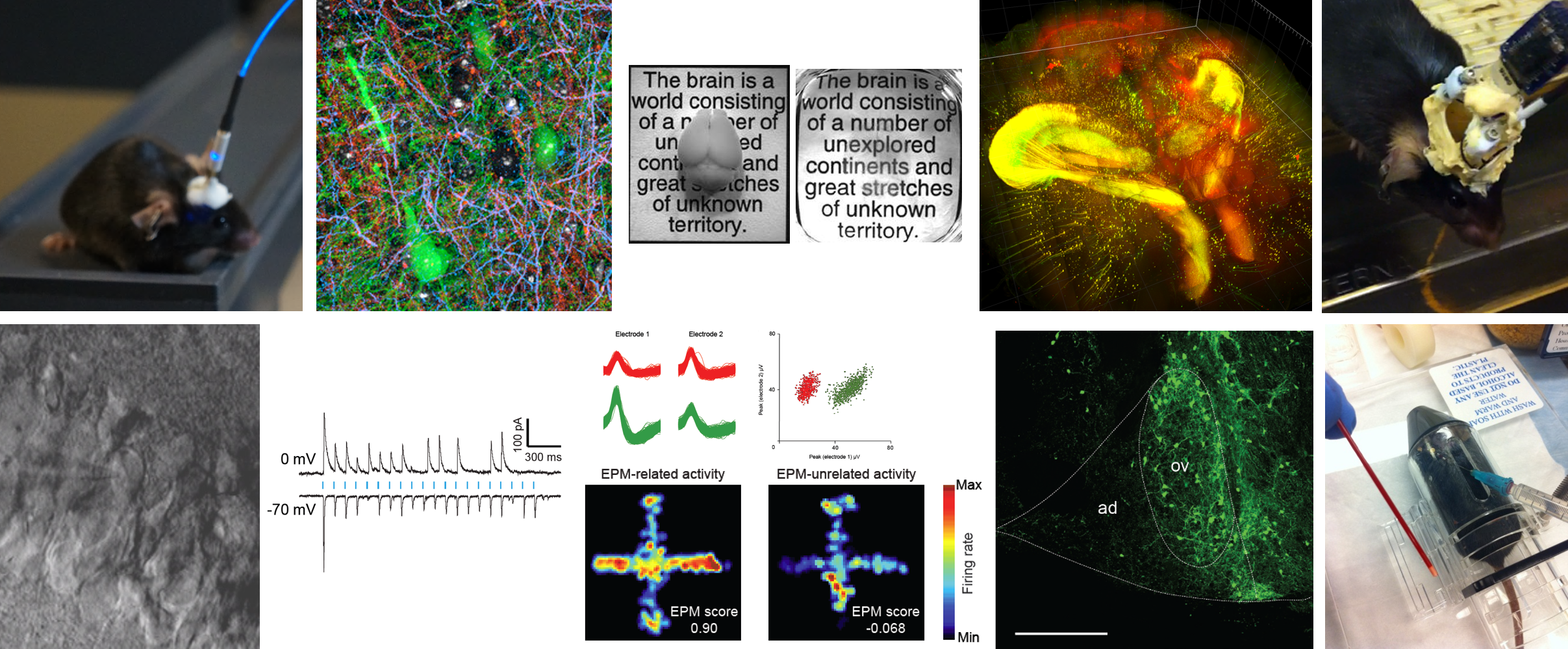 Emotions have been studied for centuries, but there are still many fundamental and interesting questions that remain unanswered. For example, how are multiple streams of sensory information integrated into a cohesive emotional state, such as the anxious state? Which brain regions play major roles in the assembly of the anxious state, and how do they interact with each other? How are diverse features of the anxious state coordinated? What circuit mechanisms underlie the interactions between related emotions, such as anxiety, fear and stress? How does the dysfunction of the relevant neural circuits lead to affective disorders?
Emotions have been studied for centuries, but there are still many fundamental and interesting questions that remain unanswered. For example, how are multiple streams of sensory information integrated into a cohesive emotional state, such as the anxious state? Which brain regions play major roles in the assembly of the anxious state, and how do they interact with each other? How are diverse features of the anxious state coordinated? What circuit mechanisms underlie the interactions between related emotions, such as anxiety, fear and stress? How does the dysfunction of the relevant neural circuits lead to affective disorders?
The extended amygdala, a supra-structure implicated in pathological and adaptive anxiety and fear, is connected with many stress-mediating regions and is thus a promising circuit-level point of entry for addressing these questions. Previous studies have revealed the extended amygdala’s complex intrinsic and extrinsic circuitry and the presence of various neuromodulators, yet the endogenous activity of these circuit elements and their causal functions remain largely unclear. Our research has sought to advance our understanding of extended amygdala circuitry, establishing the bed nucleus of the stria terminalis (BNST) as a critical circuit node for modulating different features of the anxious state. We aim to further anatomically and functionally dissect extended amygdala circuitry underlying anxiety, fear, stress and the interactions among these emotions, and ultimately to use these studies as a heuristic approach to the study of emotions more generally.
To this end, we combine multiple advanced neural circuit analysis techniques for both observation and perturbation: intact-tissue investigation tools (CLARITY, SWITCH, stochastic electrotransport and 3D tissue expansion techniques), optogenetics, in vivo and ex vivo electrophysiology, rodent behavior, physiological read-outs and molecular and viral tools. We have always been at the forefront of developing and adopting cutting-edge neuroscience techniques. Using these methods, we tackle the questions that will provide a critical and novel foundation for understanding both normal and abnormal processing of anxiety, fear, stress and related emotional states.
If you can read and understand Korean, you can also read the following article for more details.
Molecular and Cellular Biology Newsletter, June 2015, “Lab Visits”
